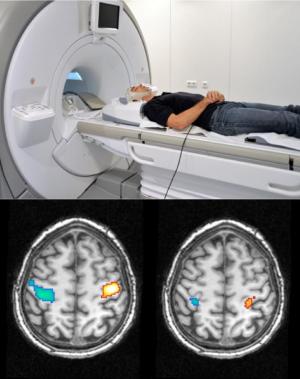Do you dream at night? Have you ever tried to explain your dream? Yes, I think you’ve! It is said that a dream has the power to unify the body, mind and spirit. It somehow reflect yourself and what you did think about during the day.
However, dream is hard to define and understand thoroughly. It seems to belong to a fascinating aspect of the human mind. Many years passed and scientist are making efforts explain how the images and emotions that we experience so intensively when we dream form in our heads yet still remaining a mystery. Up to now it has not been possible to measure dream content.
Now, every hard working works worth the expectation. For the first time, Max Planck scientists working with colleagues from the Charité hospital in Berlin have now succeeded in analysing the activity of the brain during dreaming. The research is published in the journal Current Biology.
The experts measured that the brain activity during the dreamed motion met the one viewed during a real executed movement in a state of wakefulness. They were able to do this with the help of lucid dreamers, i.e. those who identify their dreaming status and so are capable to alter the information connected with their particular dreams.
Methods like functional magnetic resonance imaging have enabled scientists to imagine and identify the precise spatial location of mental faculties activity during sleep. Yet, up to now, researchers have not been able to investigate particular brain activity connected to dream contents, just as measured brain activity can only be traced back to a specific dream if the precise temporal coincidence of the dream content and measurement is known. Whether a person is dreaming is something that could only be reported by the individual himself.
Lucid dreamers were asked to become aware of their dream while sleeping in a magnetic resonance scanner and to report this “lucid” state to the researchers by means of eye movements. The “dream” will be: repeatedly clenching first the right fist and then the left one for ten seconds.
This help the scientists measuring the entry into REM sleep — a phase in which dreams are perceived particularly intensively — with the help of the subject’s electroencephalogram (EEG) and to detect the beginning of a lucid phase. The brain activity measured from this time onwards corresponded with the arranged “dream” involving the fist clenching. A region in the sensorimotor cortex of the brain, which is responsible for the execution of movements, was actually activated during the dream. This is directly comparable with the brain activity that arises when the hand is moved while the person is awake. Even if the lucid dreamer just imagines the hand movement while awake, the sensorimotor cortex reacts in a similar way.
The researchers were able to confirm the data obtained using MR imaging in another subject using a different technology. With the help of near-infrared spectroscopy, they also observed increased activity in a region of the brain that plays an important role in the planning of movements. “Our dreams are therefore not a ‘sleep cinema’ in which we merely observe an event passively, but involve activity in the regions of the brain that are relevant to the dream content,” explains Michael Czisch, research group leader at the Max Planck Institute for Psychiatry.
Source: This article is partly based on news from Sciencedaily.com.

